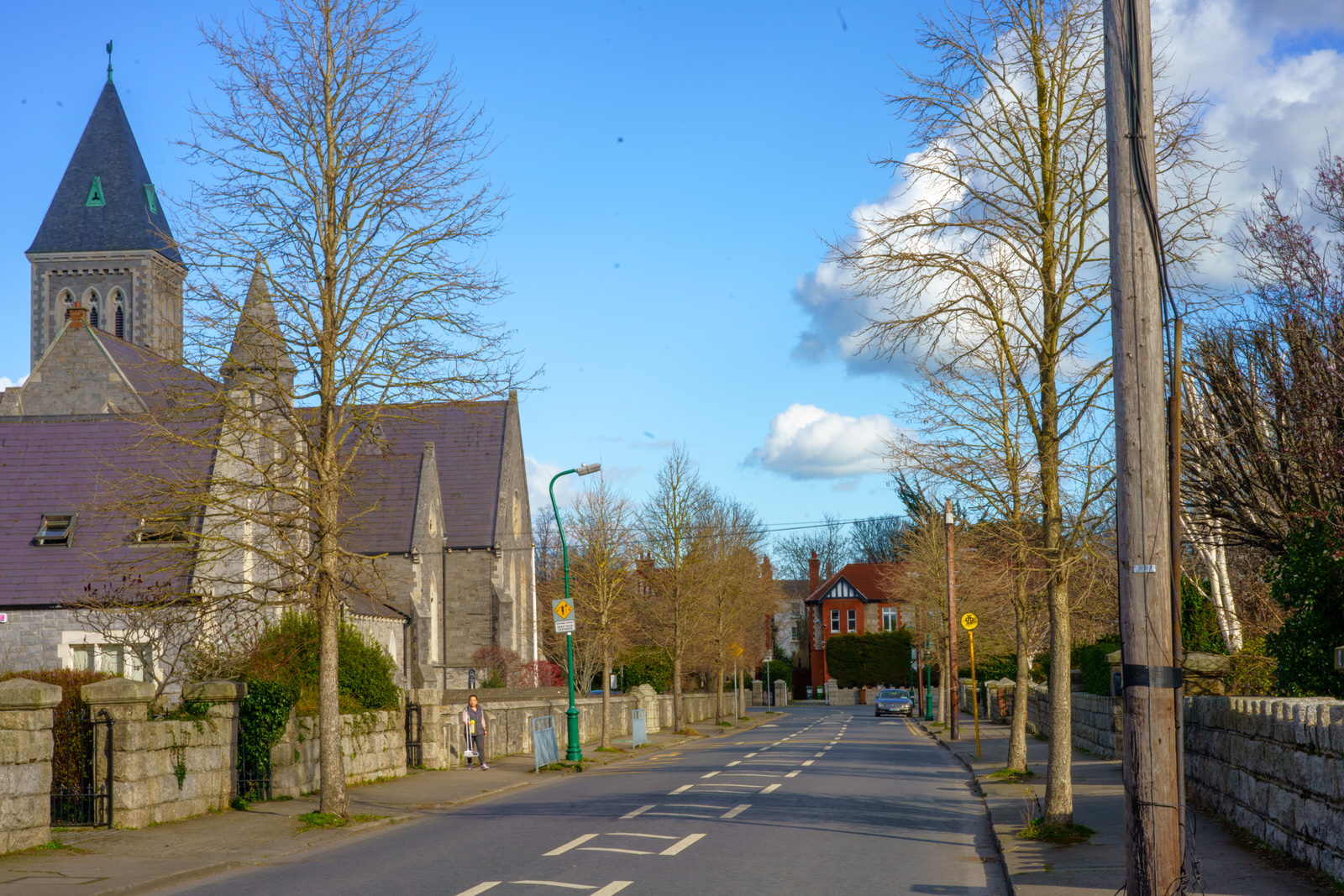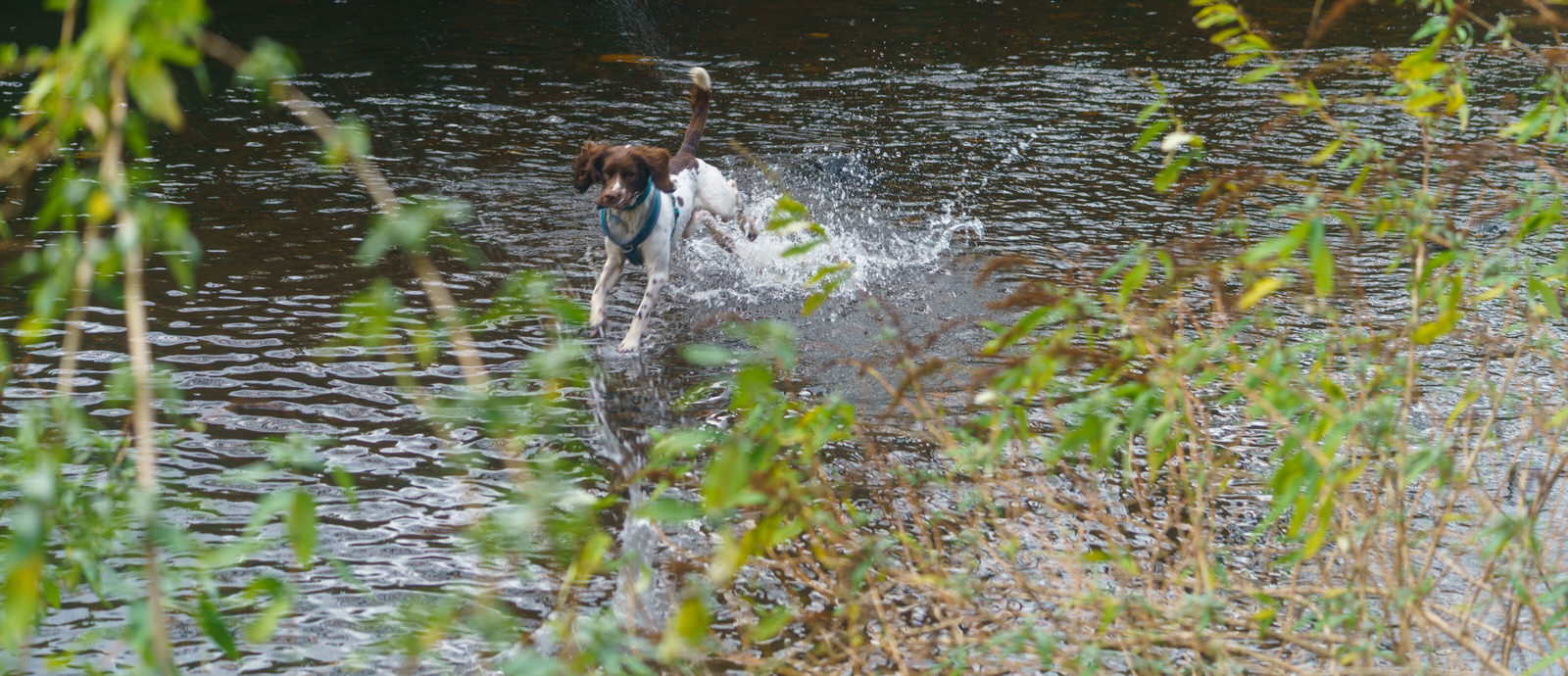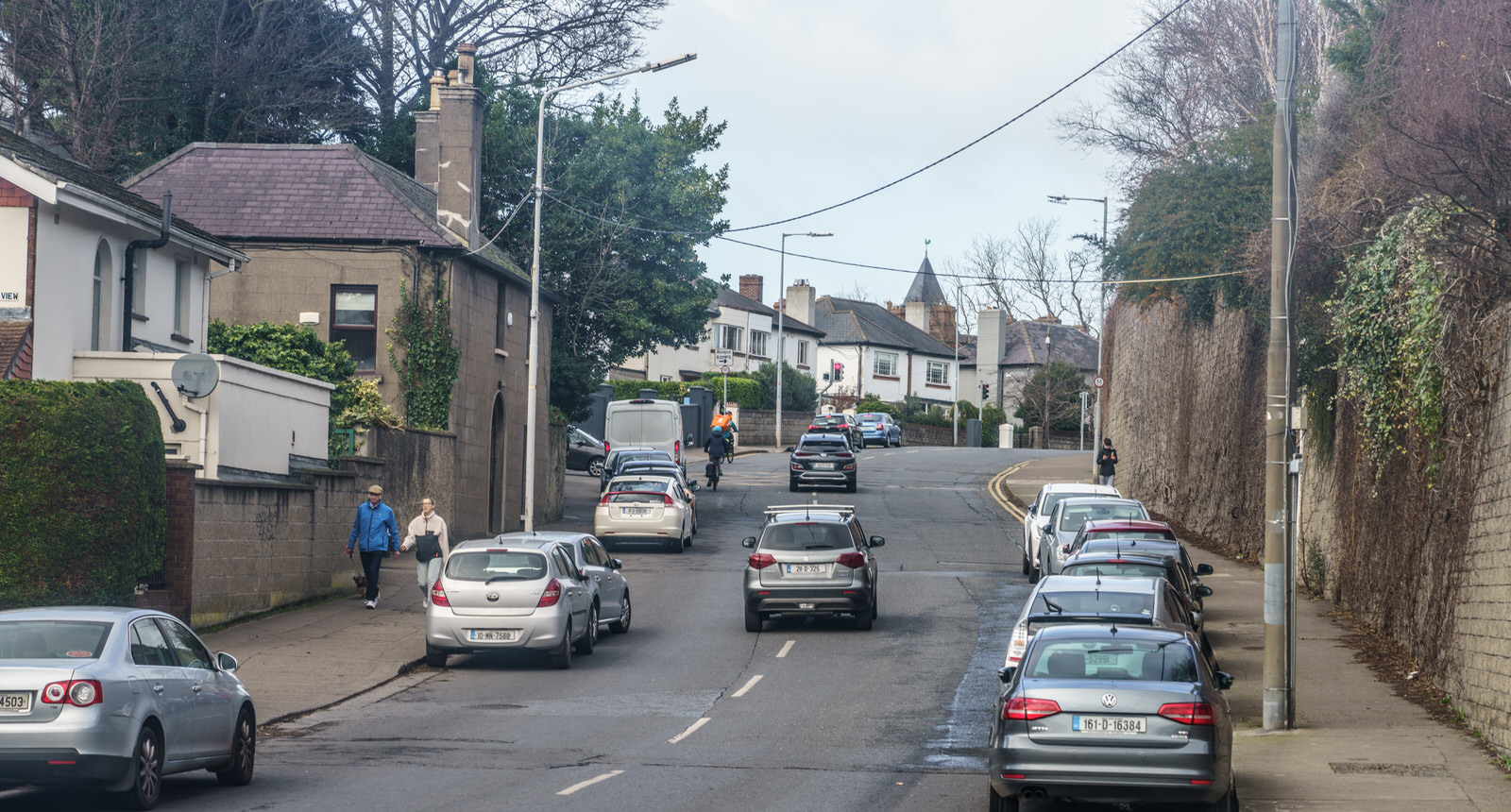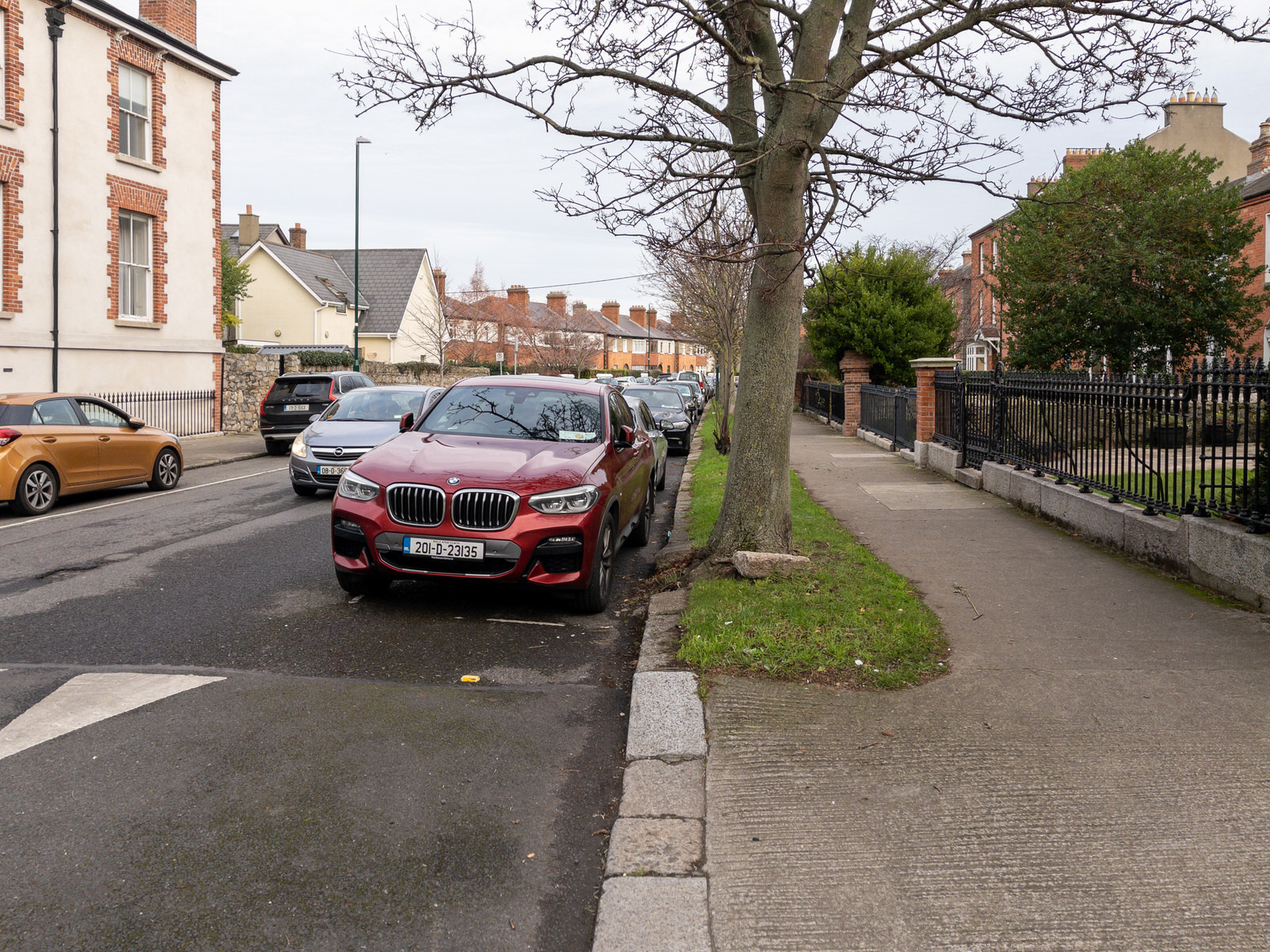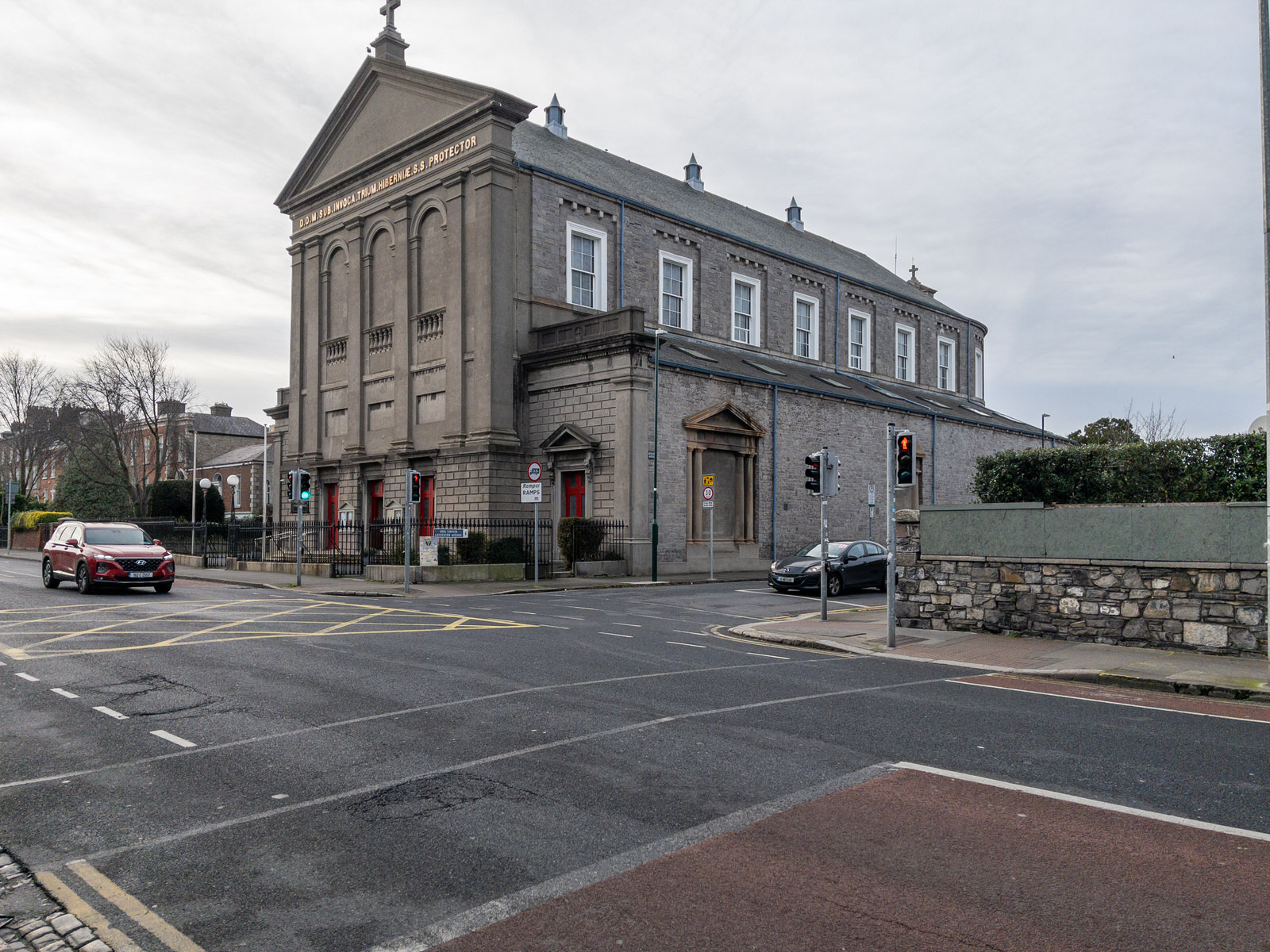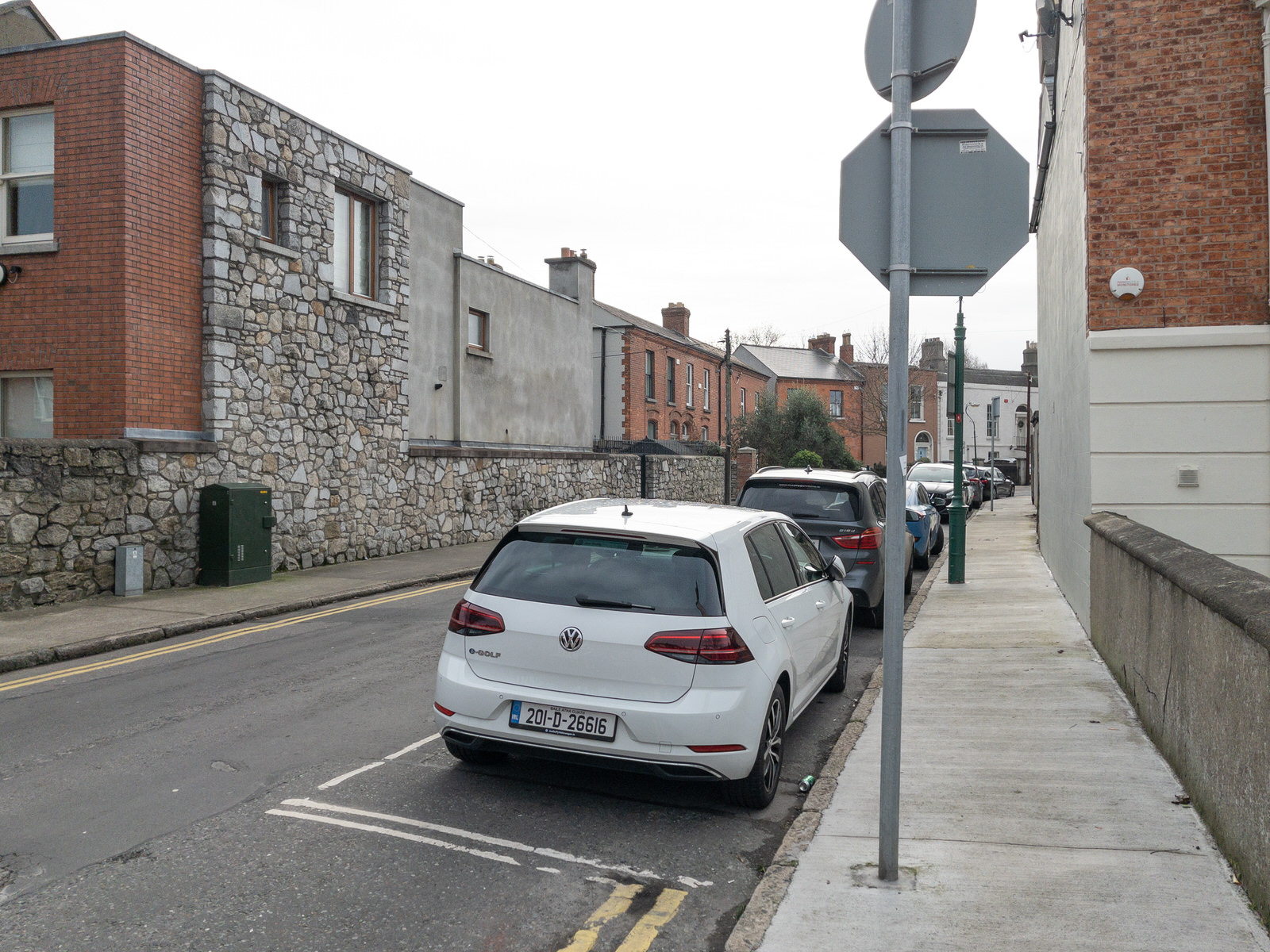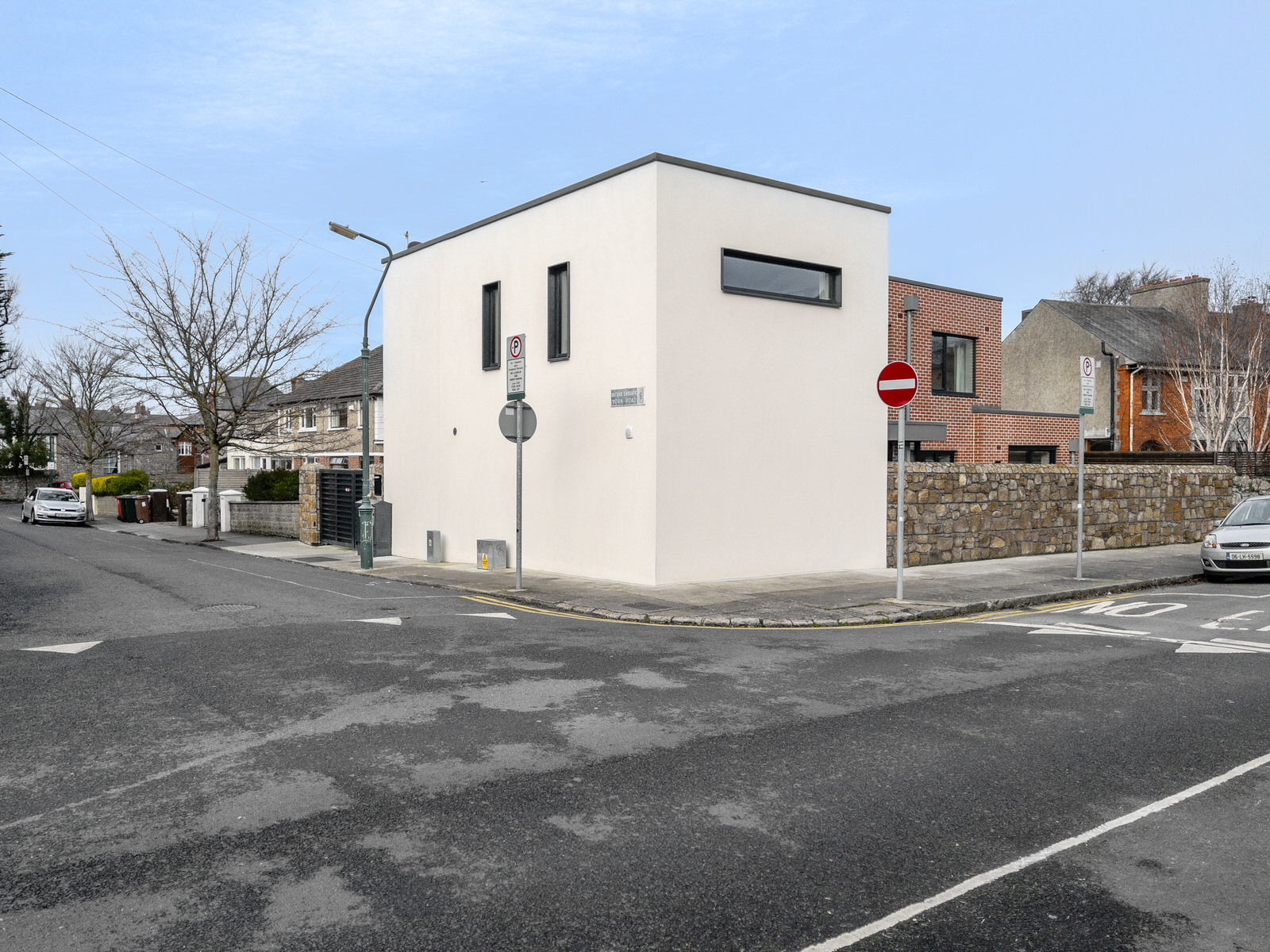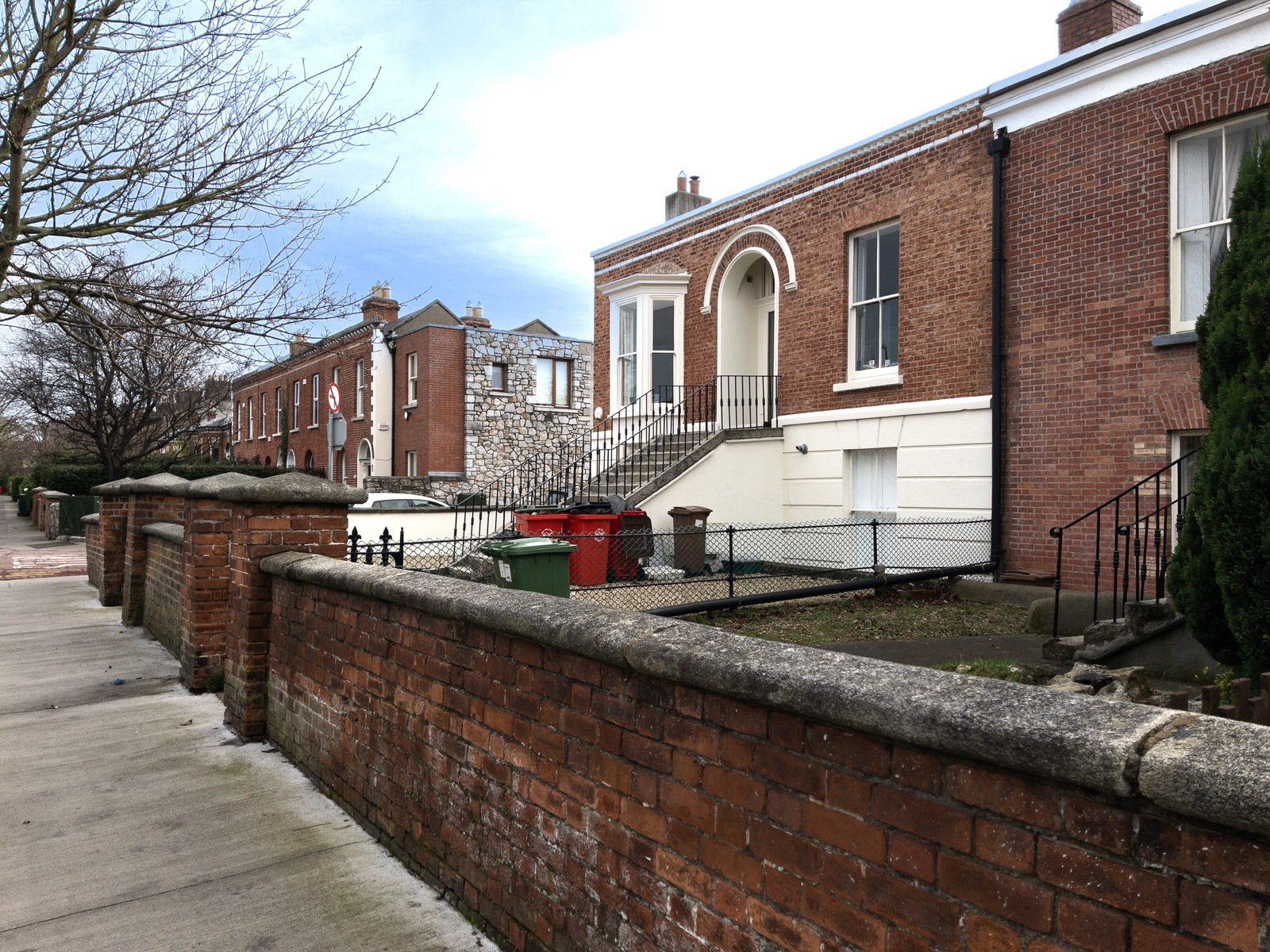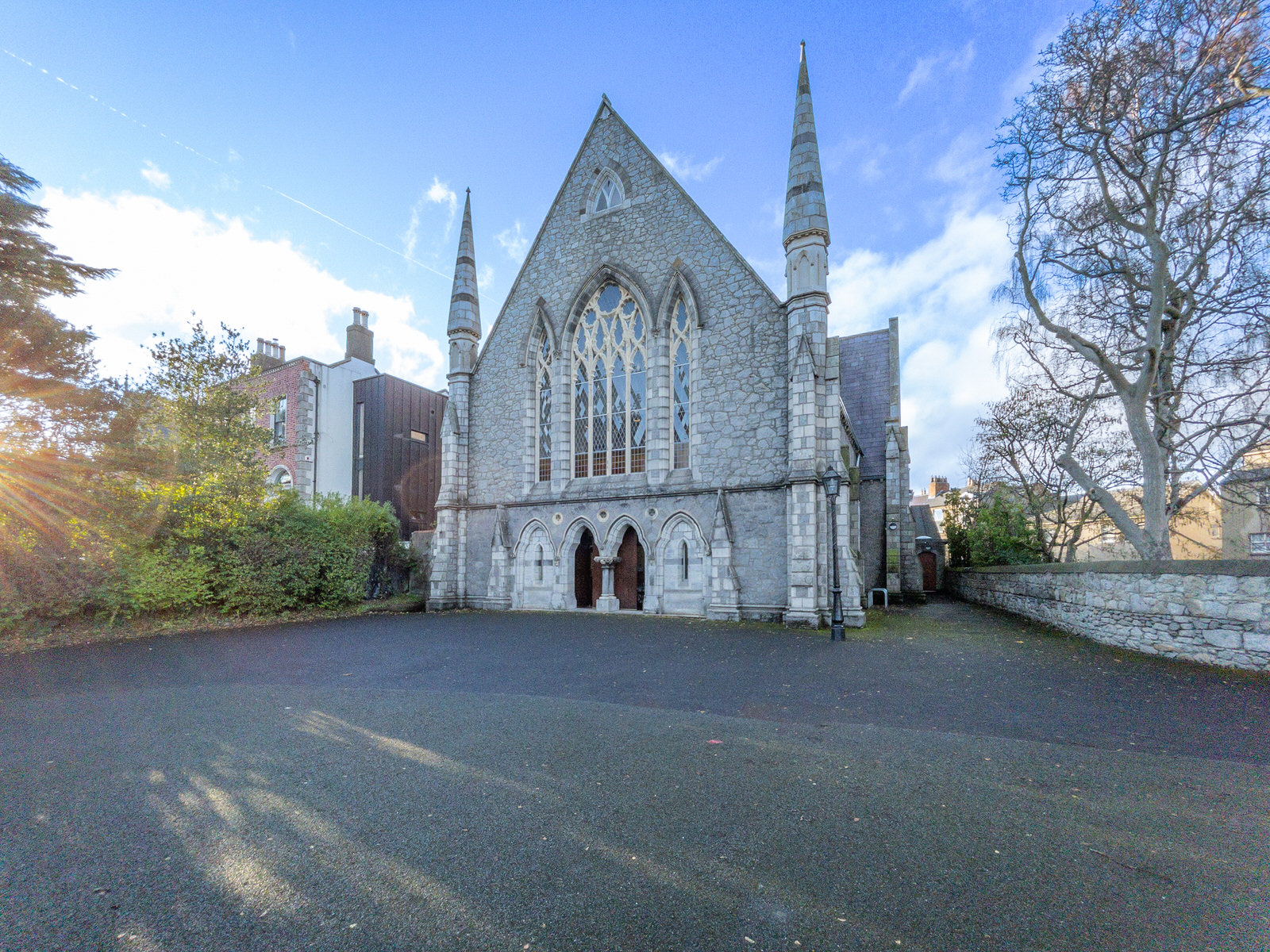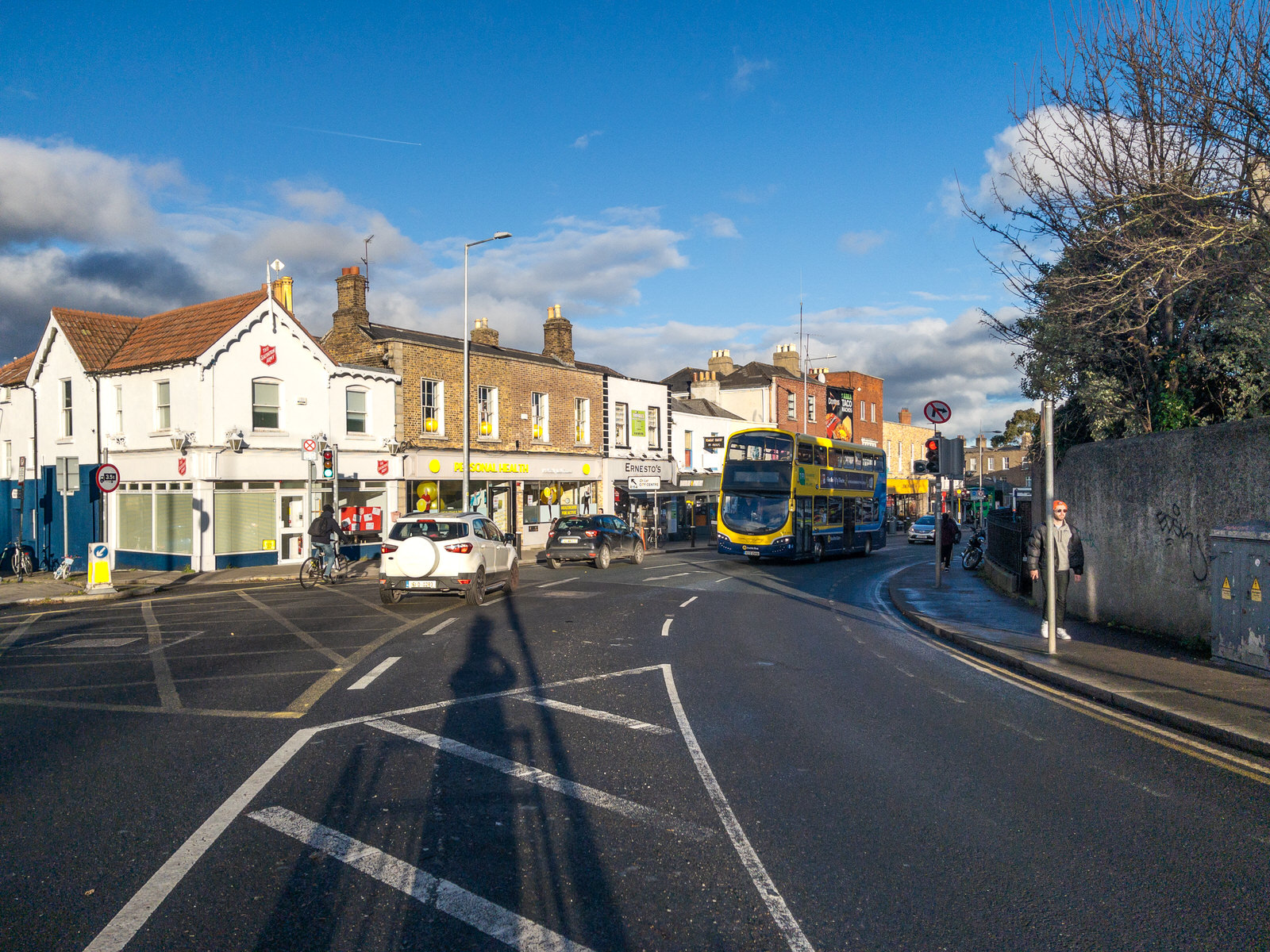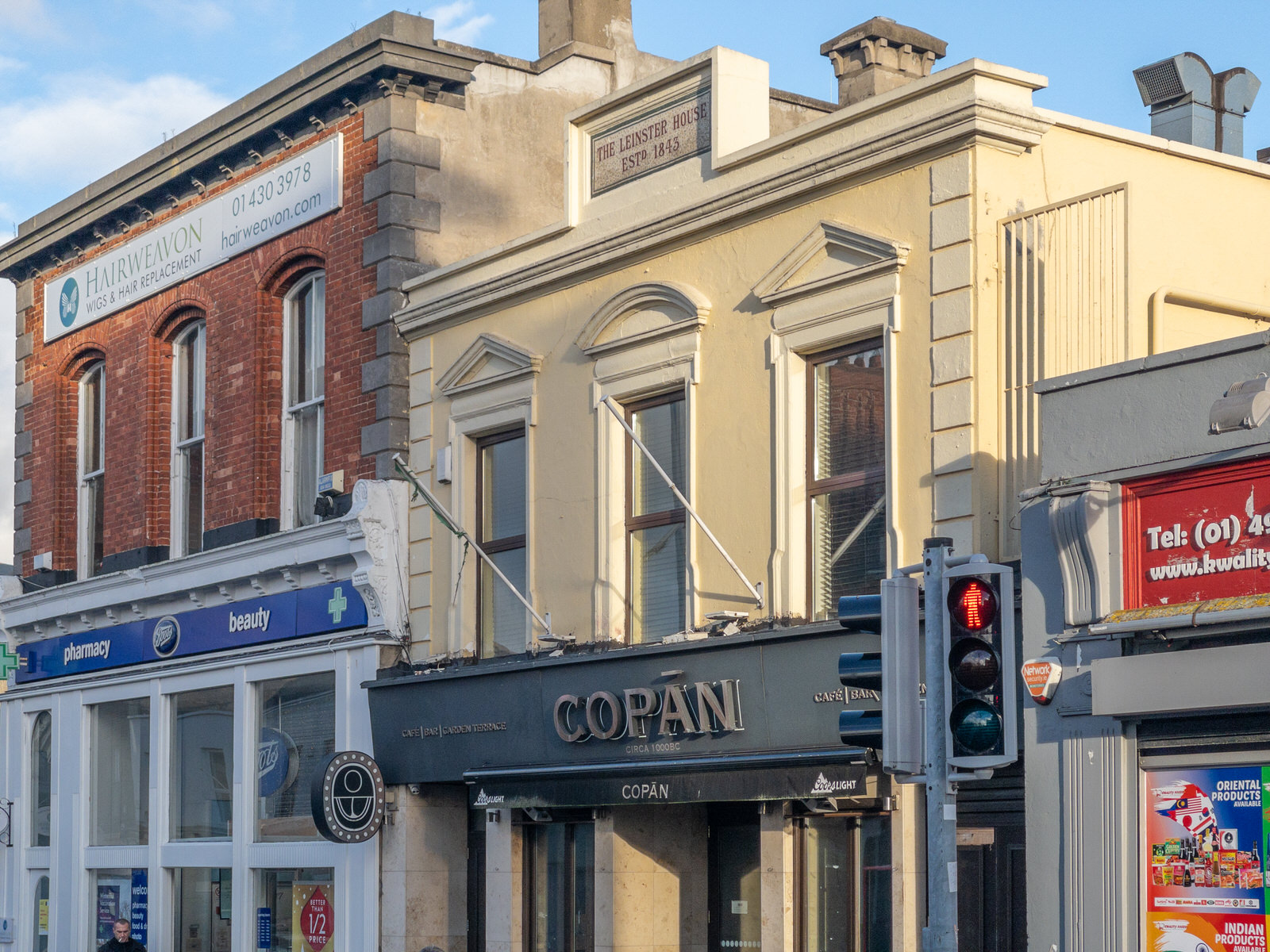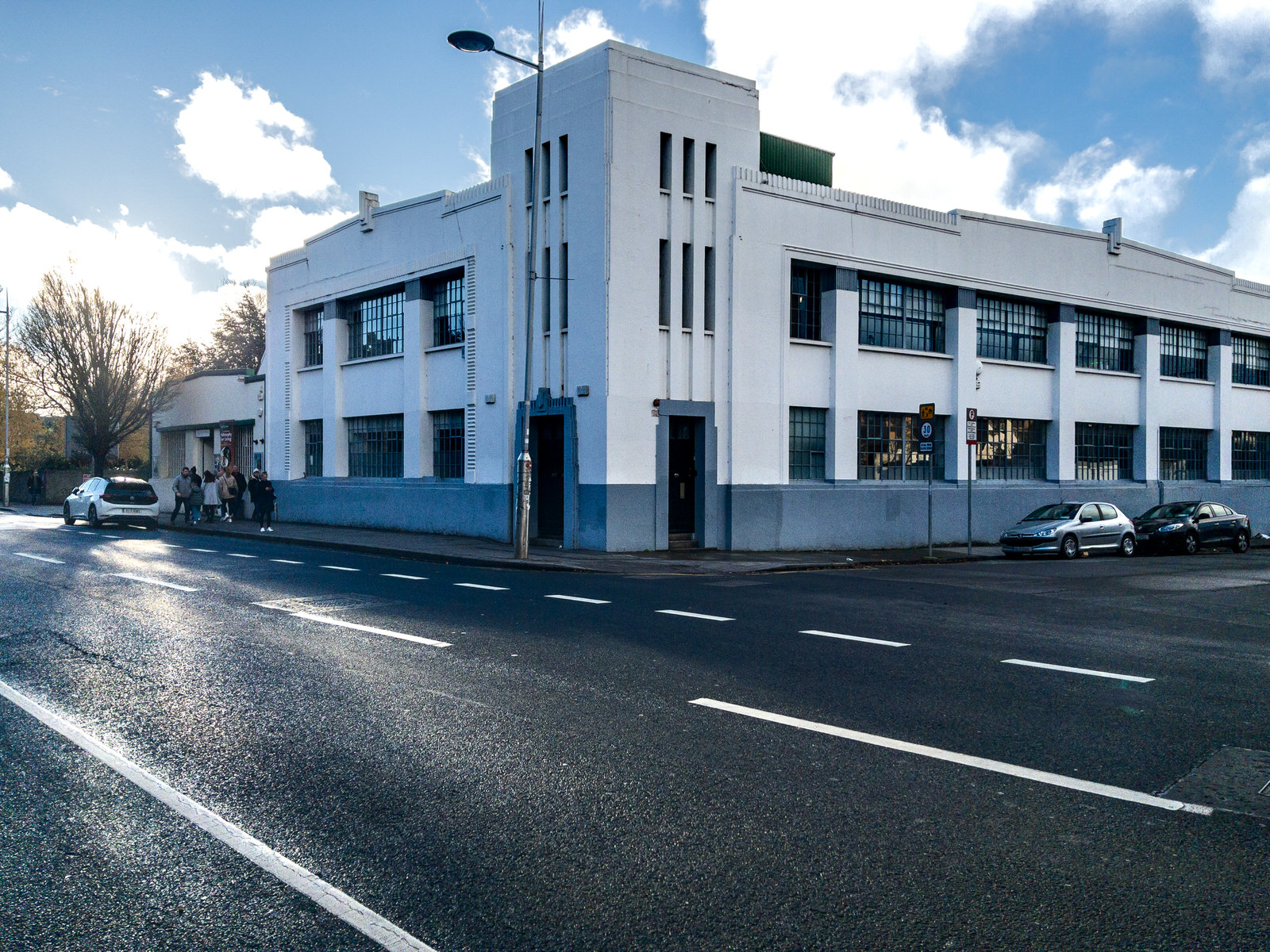RATHGAR AREAAREAS OF DUBLIN
RATHGAR AREA OF DUBLINPHOTOGRAPHED BY WILLIAM MURPHY
Rathgar is a suburb of Dublin in Ireland. It was originally a village which from 1862 was part of the township of Rathmines and Rathgar; it was absorbed by the growing city and became a suburb in 1930. It lies about three kilometres south of the city centre.
Rathgar is situated in south Dublin. It lies beside Dartry, Harold's Cross, Rathmines, and Terenure. Other nearby suburbs are Crumlin, Kimmage, Milltown, Ranelagh, and Rathfarnham. The Grand Canal flows to the north. The majority of the area lies within the jurisdiction of Dublin City Council and straddles the postal boundary of Dublin 6.
Rathgar, in the Middle Ages, was a farm belonging to the Convent of St Mary de Hogges, at present-day College Green. At the Dissolution of the Monasteries, Rathgar was granted to the Segrave family: they built Rathgar Castle, ownership of which subsequently passed to John Cusacke, who was Lord Mayor of Dublin in 1608. The castle remained in the possession of the Cusack family for over a century, but gradually decayed and was a ruin by the end of the eighteenth century. No trace of it remains today, though it is thought to have been located at present day 44-49 Highfield Road.
In 1649 the Duke of Ormonde commander of the Anglo-Irish Royalist army established his camp at Rathgar during the Siege of Dublin. He was then routed at the Battle of Rathmines nearby by English Republican forces under Michael Jones.
The village began to develop in the eighteenth century. Rathgar Avenue may be the oldest street, while Highfield Road was developed in 1753. Zion Church and Christ Church Rathgar were built in the 1860s.
ZION CHURCH AND SCHOOLZION ROAD - BUSHY PARK ROAD RATHGAR
The architect was Joseph Welland and Son.
A War Memorial Zion, inside the Zion Church, commemorates the members of the parish who were killed or missing in the Great War (World War I).
Joseph Welland (6 May 1798 – 6 March 1860) was born in Middleton, County Cork and became an Irish Architect for the Board of First Fruits and later the Ecclesiastical Commissioners. He was as a student to John Bowden and became his assistant and is noted to have designed many churches and schools around Ireland.
While working with John Bowden with the Board of First Fruits, he shared some of Bowden's works. These include St. Philip and St. James Church, Booterstown and St. Stephen's Church, Mount Street (The Pepper Canister), both of which Joseph Welland had to complete himself after Bowden's death in 1821.
Joseph Welland died on 6 March 1860 and was buried in St George's churchyard, Dublin.
His younger son William Joseph Welland (1832-1895) also designed churches, and worked for the Ecclesiastical Commissioners.
The High School is a 12–18 mixed, Church of Ireland, Independent secondary school in Rathgar, Dublin, Ireland. It was established in 1870 at Harcourt Street before moving to Rathgar in 1971 and amalgamated with The Diocesan School for Girls in 1974, becoming co-educational.
In 2009, it was ranked as the best-performing school in Ireland in terms of progression to third-level education and is part of the Erasmus Smith Trust.
DODDER GREENWAYACROSS THE RIVER FROM ORWELL WALK
This section of the walkway leads to Dartry Park and appears to be very popular with dog walkers who encourage their dogs to get in the water.
There is an abundance of flora and fauna at the river. However, as the river flows through urban areas, pollution has long been a problem.
Flora along the river is varied. Bryophytes and algae are common with an abundance of filamentous green algae. Crocosmia, Japanese knotweed and Himalayan balsam are the only invasive species recorded along the river.
The Dodder is home to many water-bird species including mallard, grey heron, kingfisher, dipper, coot, moorhen, grey wagtail, common sandpiper, cormorant and mute swan; the sparrowhawk nests in the trees lining the riverbanks. The red fox is common along the riverbank and the badger and otter have also been seen. In recent years a small feral population of mandarin ducks has become established by the river. It was reported in 2013 that an Irish Wildlife Trust survey found otters living along the Dodder.
Fish present in the river include brown trout, sea trout, stone loach, three-spined stickleback and European eel. Atlantic salmon can also be found in the river's lower course.
Atlantic salmon and lamprey eels are expected to return to most of the river after a more than 200-year absence pending the construction of fish ladders.
The Dodder is a popular river for fishing and angling amongst Dubliners. The fishing season is open between 17 March and 30 September.
ORWELL ROAD29 JANUARY 2022
The houses on Orwell Road are inclined to be expensive and the Russian Embassy is located at 184-186.
For at least a few months I have the use of a nice house at Brighton Green in Rathgar so I based myself there for a week and concentrated on photographing nearby areas such Terenure and Rathfarnham and much to my surprised I discovered areas, parks and museums that I have never visited before.
Rathgar is a largely residential suburb with amenities that include primary and secondary schools, nursing homes, child-care and sports facilities, and public transport to the city centre. The housing stock largely comprises red-brick late Georgian and Victorian era terraces and much of the area lies within an architectural conservation zone.
Dodder Park is located in Rathgar.
One of the main schools in the area is The High School, Dublin, which moved to the area from its original location on Harcourt Street in 1971. The High School follows a liberal Anglican heritage, but also has students of Jewish heritage. Other schools include Stratford College on Zion Road, which was founded in the 1950s by members of the Jewish Community in Dublin. St Louis High School, Rathmines was opened in 1913 and provides education for girls.It is a member of The Le Cheile Schools Trust. St Mary's College, which provides education for boys, have sports facilities in Kenilworth Square, Rathgar. The rest of the school is in Rathmines. Rathgar is also the home of a school called Rathgar Junior School.
LEICESTER AVENUE - KENILWORTH SQUARE JANUARY 2022
Kenilworth Square is a Victorian square in the Rathgar area of Dublin 6, Ireland. It was developed by several different developers between 1858 and 1879. Unlike the larger city squares such as Fitzwilliam Square, Kenilworth developed more organically around a central square plot of land. The houses are in a variety of different styles although all are finished in red brick. The Ordnance Survey map of 1867 shows that most plots surrounding the square had already been laid out and built upon at that stage. Development of the surrounding area had begun initially after the establishment of the township of Rathgar and Rathmines in 1847.
St Mary's College privately own the green area inside the square which they acquired in 1948. This area contains rugby pitches and a cricket pitch as well as some changing rooms.
Kenilworth bowling club was established in the square in 1892 in the back garden of Charles Eason, founder of Eason & Son at 29 and 30 Kenilworth Square. The club acquired a 25-year lease on nearby Grosvenor Square in 1909 and have remained there ever since despite retaining the Kenilworth name.
CHURCH OF THE THREE PATRONSJANUARY 2022
The Church of the Three Patrons was one of the last buildings by the architect Patrick Byrne. Its primary purpose was to fulfil the spiritual needs of the many catholic domestic servants working in large wealthy Protestant homes in the area. My grandmother referred to it as the "Servants’ Church" but to my grand-aunt it was "The Maids Church".
The Irish Times, then the voice of unionism, was not happy about the new church. "The adherents of the Papacy in this country seem to be determined to brave the law and public decency to the utmost," said the paper. "On Sunday last, the Protestant and quiet township of Rathgar was the scene of mob fanaticism and priestly display. A chapel, it seems, is to depreciate the value of the property of the neighbourhood and drive the Protestant occupants from the place."
Patrick Byrne (1783 – 10 January 1864) was an Irish architect who built many Catholic churches in Dublin. He also served as a vice president of the Royal Institute of the Architects of Ireland.
He studied under Henry Aarond Baker (1753–1836) at the Dublin Society Schools from 4 February 1796. As Baker had been a student and partner of James Gandon, Byrne would likely have been introduced to neoclassicism around this time. Byrne won a second class premium in 1797 and a first class premium in 1798.
Between 1820 and 1846 he worked as a measurer and later as an architect with the Wide Streets Commission. Although there is no record of Byrne designing any building before St. Pauls' Church in 1835, Brendan Grimes says that Byrne must have acquired sufficient experience to have been awarded the commission. He suggests that if Byrne did not have his own firm, then he "...was almost certainly working as a partner or chief assistant with another architect"; likely his teacher, Henry Aaron Baker, or Francis Johnston. After the Catholic Emancipation of 1829, limits to church building were removed and he was commissioned to design many Catholic churches in Dublin.
The cornerstone of St. Audoen's Church was laid in July 1841. Like St. Paul's it is of a neoclassical design, this time Byrne opting for Corinthian columns. And like St. Paul's, it features three statues atop the pediment. A particular challenge in the design was the building of the church on a steep slope. To compensate, the church has a double-level crypt.
Byrne was a council member of the Royal Institute of the Architects of Ireland between 1842–1843 and 1846-1854. In 1847 he became a fellow and later a vice president between 1855 and 1864. He was also a vice patron to the Aged and Infirm Carpenters' Asylum between 1842 and 1847. A member of the Society of Irish Artists from 1845 to 1849 and an architect to the Trustees of the Royal Exchange between 1847 and 1851.
He lived in Blackrock at 3 Waltham Terrace from 1855 until he died on 10 January 1864. He was buried in the family plot at Glasnevin cemetery.
The parish priest of the Rathmines Church, William Meagher gave a eulogy of Byrne, “Of this gifted man whose talents and disinterested care have laid us under such obligations, of him who designed the portico of St Paul's and erected the majestic shrine of St Audoen's and the solemn cathedral-like pile of St James and the bold and beauteous dome of Our Lady of Refuge, of the accomplished and good and generous Patrick Byrne how truly may it not be said that he regarded the beauties of classical and mediaeval art with equal reverence, studied their several excellencies with equal assiduity & wrought upon the principles of both with equally supereminent success.”
Other churches by Patrick Byrne in chronological order.
St. Paul's, Arran Quay, Dublin (1835–1841) St. Audoen's, High Street, Dublin (1841–1852) St. John the Baptist, Blackrock, Dublin (1842–1845) St. James, James's Street, Dublin (1844–1854) Mary Immaculate Refuge of Sinners, Rathmines, Dublin (1850–1856) Church of the Immaculate Conception (Adam and Eve's), Merchant's Quay, Dublin (1852) St. Assam's Church, Raheny, Dublin (1859–1864) St. Nicholas of Myra (Without), Francis Street, Dublin (1860) Major enhancements to the existing church
GARVILLE ROAD IN RATHGARJANUARY 2022
During this visit I did not have time to explore Garville Road and Garville Avenue but I will revisit the area later in the month as I have the use of a house in Rathgar for a few weeks.
Rathgar is a largely residential suburb with amenities that include primary and secondary schools, nursing homes, child-care and sports facilities, and public transport to the city centre. The housing stock largely comprises red-brick late Georgian and Victorian era terraces and much of the area lies within an architectural conservation zone.
One of the main schools in the area is The High School, Dublin, which moved to the area from its original location on Harcourt Street in 1971. The High School follows a liberal Anglican heritage,[8] but also has students of Jewish heritage. Other schools include Stratford College on Zion Road, which was founded in the 1950s by members of the Jewish Community in Dublin. St Louis High School, Rathmines was opened in 1913 and provides education for girls.[ It is a member of The Le Cheile Schools Trust. St Mary's College, which provides education for boys, have sports facilities in Kenilworth Square, Rathgar. The rest of the school is in Rathmines. Rathgar is also the home of a school called Rathgar Junior School.
Rathgar has a number of retail outlets, including a small Supervalu supermarket, and several restaurants.
MAXWELL ROADRATHGAR - RATHMINES
Maxwell Road is frequently described as being midway between the villages of Rathgar and Rathmines. It is off Frankfort Avenue which is in Rathgar but my grandmother, who lived on Frankfort Avenue, considered Maxwell Road to be lower on the social scale as it was, in her opinion, in Rathmines. My grandmother did mention that a famous gentleman known as "God On A Bike" lived on Maxwell Road.
Charles Powell lived in a detached house on Maxwell Road with two dogs. He was frequently seen riding round Dublin on a bicycle and because of his beard he was known, locally, as 'God on a bike'. He was the favoured architect of the Dublin Jesuits, who in 1911 commissioned him to design their University Hostel in Hatch Street, a Gothic building in bright red brick, rising conspicuously above the neighbouring terraces. He died 1956 although his last work to be recorded in the Irish Builder, an addition to Rosary House, Harold's Cross, dates from 1957, while his churches at Rathangan and Caragh, Co. Kildare, were not opened until 1958.and 1960 respectively.
University Hall, also known as Hatch Hall, is a building on Hatch Street, Dublin 2, Ireland which has housed a Jesuit university hall accommodation, a Direct Provision accommodation centre for asylum seekers and refugees and in 2020 a plan was lodged for its conversion to a 60-bedroom 5-star hotel. The building was designed in 1910 in a late-Victorian and gothic-revival style which contrasted markedly with its predominantly Georgian townhouse surroundings.
Founded by the Jesuits in 1913, University Hall provided accommodation for third level male students studying in Dublin until its closure in 2004.[4] The Jesuits promoted a spirit of 'Friendship, Faith, Involvement', and the hall was well known for its community spirit. The hall's motto was Sic Luceat Lux Vestra; in this way let your light shine
Initially the hall catered to only a small number of students, mostly studying medicine in UCD, but its intake grew progressively larger throughout the twentieth century to a yearly average of over 100 male students.
In 2004 the property was bought for €16m by Gerry Barrett, a property developer who intended to develop the hall into a hotel. Permission for an 81-bedroom hotel was initially granted permission by Dublin City Council before being rejected by An Bord Pleanála.
Later the building was operated as a Direct Provision centre being used as accommodation for asylum seekers and refugees.
The building was acquired by Red Carnation Hotels for €20m in 2019 and is to be converted into a 5-star boutique hotel.
The undisputed annual highlight of the Hall's calendar was the 'Hatch Ball' a large formal dinner held in the nearby Shelbourne Hotel. It was by no means, however, the only social gathering; with intermittent discos in nearby nightclubs, nightly parties in private rooms usually proceeding to Dublin nightclubs and regular excursions to the beloved local pub, Hartigans of Leeson Street, the social scene was always vibrant.
The hall also supported a number of societies including film, debating and photography. The management actively encouraged hall residents to become active members of the local community through charity events and homework clubs.
Former residents of Hatch hall still meet socially in Hartigans pub on the first Wednesday of every calendar month; a social gathering known as "Hatch Wednesday". Past residents of the hall have included Desmond O'Malley, founder and former leader of the Progressive Democrats; Brian Cowen T.D and Michael O'Leary, Ryanair CEO.
FRANKFORT AVENUEWHERE I AND COUNTESS MARKIEVICZ ONCE LIVED
I attended national school in Donegal but I had to move to Dublin to attend secondary school so I lived with my grandmother for two years at her home on Frankfort Avenue. I really liked the area and always have.
The most outstanding house on the street is No 1 and my grandmother told me that it was owned by Cornelius Ryan.
Ryan (5 June 1920 – 23 November 1974) was an Irish-American journalist and author known mainly for writing popular military history. He was especially known for his histories of World War II events: The Longest Day: 6 June 1944 D-Day (1959), The Last Battle (1966), and A Bridge Too Far (1974).
Born and raised in Dublin, Ireland, he began working as a journalist in London in 1940. He became involved in covering World War II and travelled with troops in Europe. After the war, he covered the establishment of Israel. He immigrated to the United States in 1947 to work for Time. In 1951 Ryan became a naturalised US citizen and lived there for the remainder of his life.
You can imagine my surprise when I discovered, a few years ago, the house in question was once home to Constance Gore-Booth, who on her marriage to the Polish painter Count Markievicz adopted the title Countess Markievicz. In 1903 they moved into the villa on Frankfort Avenue, which was a wedding present from her mother. They lived there with the count’s son Stanislaus from a previous marriage, and their daughter Maeve. She was an artist, like her husband, and her studio built at the side of the house remained intact before it was destroyed by fire.
My grandmother would not have made such a mistake so I often wondered why she told me that the house was owned Cornelius Ryan ... maybe she disapproved of the Countess.
GROSVENOR ROAD BAPTIST CHURCH DECEMBER 2021
When I first use my iPhone XR a few years ago I did not realise that the images were HEIC which was a format that I could not easily process and today I was reviewing my catalogues I re-discovered many photographs from June 2019 that had been automatically converted to a usable format on the 16th November 2021. Now I know why my system had slowed to a crawl a few weeks ago.
This church has been regarded as the finest Dublin church designed by J.J. McCarthy, the well-known architect of Catholic church buildings. It is an excellent example of Gothic Revival architecture, complete with finely wrought stone masonry and architecural details.
In 1974 St. Saviour’s became the parish church for the surrounding area and in 2000 was made the Studium for the formation and training of priests for the Irish Dominicans. A further major step in these years was the establishment of the Dominican Polish Chaplaincy in St. Saviour’s which today sees large numbers of Polish faithful attending Mass and services every week, along with the Irish and Spanish-language congregations, making St. Saviour’s a truly international church in the heart of Dublin.
SALVATION ARMYRATHGAR ROAD
I was sure if this was on Rathgar Road or Lower Rathmines Road and I was hoping that the building would have an interesting story or history but all that I could find was the following description: "17A/18 Rathgar Road comprises of a two storey end-of-terrace building totalling approximately 193 sq.m. (2,077 sq.ft). The ground floor comprises of retail accommodation with store room, canteen and 2 no. W.C' s to the rear of the property. The first and second floors are in use as office and storage accommodation".
I mainly contribute to two charities and they are the RNLI and the Salvation Army because of the work they undertake.
The Salvation Army is a worldwide Christian church and registered charity. The Salvation Army in Ireland [ROI] is part of the wider international Salvation Army, which is at work in 131 countries, demonstrating Christian principles through practical support; offering unconditional friendship, and very practical help to people of all ages, backgrounds and needs.
In Dublin the Salvation Army operates six residential centres (Lifehouses) helping people of all ages overcome the challenges of homelessness. The Salvation Army also has two community churches, one on the north and one on the south side of the city.
salvation army, rathgar road, rathmines, dublin, ireland, salvation army, charity, interesting building, william murphy, infomatique, apple, iPhone 12 Pro Max,
THE LEINSTER HOUSEESTABLISHED 1843
This building, which I have always liked, is at the corner of Rathmines Road and Blackberry Lane and it is known as Kodak House or the Kodak Building.
The Kodak Building is one of two listed Art Deco buildings in Dublin. It was designed by Architects Donnelly, Moore and Keatinge in 1930. A complete refurbishment was undertaken in 1998 to convert the building into modern office space by Paul Keogh Architects . The project received an RIAI Award and won a prestigious Glen Dimplex Design Award in 2002. It was short listed for the RIAI Silver Medal for Conservation and has featured in international publications on the design principles of remodelling existing buildings for contemporary use.
https://c20society.org.uk/building-of-the-month/kodak-house-dublin
THE KODAK BUILDINGART DECO STRUCTURE
This building, which I have always liked, is at the corner of Rathmines Road and Blackberry Lane and it is known as Kodak House or the Kodak Building.
The Kodak Building is one of two listed Art Deco buildings in Dublin. It was designed by Architects Donnelly, Moore and Keatinge in 1930. A complete refurbishment was undertaken in 1998 to convert the building into modern office space by Paul Keogh Architects . The project received an RIAI Award and won a prestigious Glen Dimplex Design Award in 2002. It was short listed for the RIAI Silver Medal for Conservation and has featured in international publications on the design principles of remodelling existing buildings for contemporary use.
https://c20society.org.uk/building-of-the-month/kodak-house-dublin
Commercial DisclosurePLEASE NOTE THAT LINKS BELOW MAY REDIRECT YOU TO THE AMAZON LOCATION MOST LIKELY TO SHIP TO YOUR ADDRESS
You will find links to buy products from Amazon, Google and other partners. If you click on these links, you’ll find that the URL includes a small extra piece of text which identifies that the click came from my websites. This text is an affiliate code, and it means that I get a small percentage of the money you spend if you choose to buy that product, or, in some cases, other products from the site soon after. These affiliate links help pay the costs of producing my websites and ensure that the content is free to you.

Zeiss Batis 85mm f/1.8 Lens for Sony E Mount, Black
I HAVE THIS AND THE 135mm LENS
VERSATILE FULL-FRAME LENS: The powerful lens for the mirrorless full-frame system of Sony fulfills the highest requirements. Despite its compact design, the image meets the expectations of professional photographers. EXCELLENT RESOLUTION AND HIGH CONTRAST: Richly saturated and vivid colours are a must in the creation of lasting impressions. However, stray light within an optical system leads to a lightening of the image that is particularly noticeable in the shadows. This reduces image contrast, with the result that exposures lack contrast and appear faded. To avoid this, ZEISS combines various specially developed technologies to reduce the undesirable effects of stray light. ROBUST AND WEATHERPROOF METAL CONSTRUCTION: Thanks to features that are designed to keep out dust and spray water, the lens is perfectly suited for critical outdoor conditions. It is also designed for many years of intensive use. SMOOTH AND RELIABLE AUTOFOCUS: The design of the autofocus system requires an extremely accurate shifting of particular lens groups. The focusing system of ZEISS lenses is designed to ensure a robust and smooth-running autofocus mechanism with the best imaging performance.
YOU SHOULD ALSO CONSIDER THE 25mm LENS
